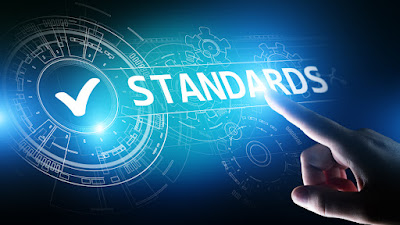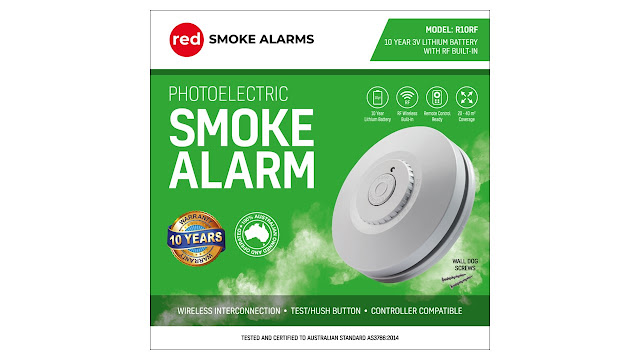Heat Alarms and the NSW Short Term Rental Accommodation Fire Safety Standard - What every Short Term Rental Provider Must Know!
Did you know that the NSW Short Term Rental Accommodation
(STRA) Fire Safety Standard places specific obligations for fire safety on the
owners / providers of short term rental accommodation in NSW? The objective of
this Standard is to provide for the safety of users of short term rental
accommodation, who may be less familiar with the dwelling. Examples of short
term rental accommodation include when you rent out your property privately, use
an agent, or electronically via Airbnb, booking.com, Stayz or any other similar
short term rental accommodation platform.
Section 4.1 of the NSW Short Term Rental Accommodation
(STRA) Fire Safety Standard calls out requirements for interconnected
smoke alarms and heat
alarms (also called heat detectors) within the short term rental
accommodation dwelling.
The standard states that interconnected smoke alarms complying
with Australian Standard 3786 (AS 3786) must be installed on or near the
ceiling in every corridor or hallway associated with a bedroom. If there is no
corridor or hallway then the alarms must be installed in an area between the
bedroom and the rest of the dwelling. Alarms must also be installed on every
level of the dwelling. The alarms can be powered either by being hardwired into
the 240v mains electricity supply of the building (requires electrician), or by
a non-removeable 10-year battery (does not require electrician).
A specific point of interest for this standard relates to
the requirement for a heat alarm (heat detector) to be installed in the garage.
Section 4.1.2 states that a heat alarm must be installed in any private garage
that is attached to the dwelling, that is not associated with the dwelling.
What this means in plain English is that if you offer short term rental
accommodation to a guest, and the rental offering does not include a garage for
the guest to use (but there is still a private garage elsewhere in the same property),
then there must be a heat alarm installed in that garage. Furthermore, the heat
alarm must be installed on or near the ceiling, comply with Australian Standard
1603.3, and be interconnected to the other smoke alarms in the dwelling so if
one activates, they all activate. The heat alarm can be powered either by
hardwiring it into the 240v mains electricity supply, or it can be powered by a
non-removeable 10-year battery. Notices must also be installed saying that a
heat alarm is installed in the garage and that it is interconnected to other
smoke alarms in the dwelling.
Failure to adhere to the requirements of the NSW Short Term
Rental Accommodation Fire Safety Standard could potentially expose a short term
rental accommodation (STRA) owner / provider to unwanted legal or insurance
complications should a fire event occur.
Apart from the need to install a heat detector to meet your
compliance requirements, installing one in a STRA property may have an unexpected
benefit in that it can reduce the potential for nuisance false alarms to occur.
Conventional photoelectric smoke alarms are prone to nuisance alarming in the
following locations – kitchen (smoke from cooking), garages (car exhaust fumes)
and outside the bathroom area (humidity from steam). Repeat nuisance alarms are
stressful and frustrating for all stakeholders – the guest, the owner and
neighbours alike. However, as heat alarms operate on a different principal to
smoke alarms, they are not affected by external environmental factors such as
cooking smoke from the oven. Heat alarms will typically activate when the
ambient temperature around them reaches and exceeds 55 degrees Celsius (elevated
temperature caused by fire). It should be noted that heat alarms should be
installed to compliment an existing interconnected photoelectric smoke alarm
system – they are not designed as a substitute for it. Interconnected photoelectric
smoke alarms still provide the best early warning detection of smoke from slow
smouldering fires which are typical of most common house fires.
Now that we know what the NSW Short Term Rental
Accommodation Fire Safety Standard requires in terms of smoke alarms and heat
alarms, the next question is where can one source suitable smoke alarm and heat
alarm products that meet all the requirements? Fortunately, Red smoke alarms manufacture
suitable products. Here is a quick summary of their heat alarms;
Red
heat alarm model RHA240SL. This is a 240v mains powered heat alarm that
also contains a 10 year lithium battery back-up (to continue to supply power in
case mains power is temporarily lost). As it is a 240v mains powered heat alarm
an electrician is required to install it by hardwiring it into the household
electricity supply. The Red heat alarm model RHA240SL can also be
interconnected with up to 40 other Red smoke alarms / heat alarms, with the
addition of a Red heat alarm wireless module (model RHARFM). It comes with a 5-year
warranty.
Red
heat alarm model RHA10RF. This is a wireless lithium battery powered
heat alarm. As there is no hardwiring involved, it does not require an electrician
to install it. The Red heat alarm model RHA10RF can be interconnected with up
to 40 other Red smoke alarm / heat alarm products. It also comes with a 5-year
warranty.
Red heat alarm wireless module RHARFM. This clever
device is not a heat alarm as such, rather, it is a wireless module that simply
slides into the rear of the Red heat alarm model RHA240SL. When inserted into that
heat alarm, the wireless module acts as a transmitter and allows the heat alarm
to interconnect and communicate wirelessly to other Red smoke alarms and heat
alarm products.
Feel free to reach
out to us today to discuss all your Red smoke alarm and heat alarm
requirements!
https://www.wireless-interconnected-photoelectric-smoke-alarms-australia.com/



Comments
Post a Comment